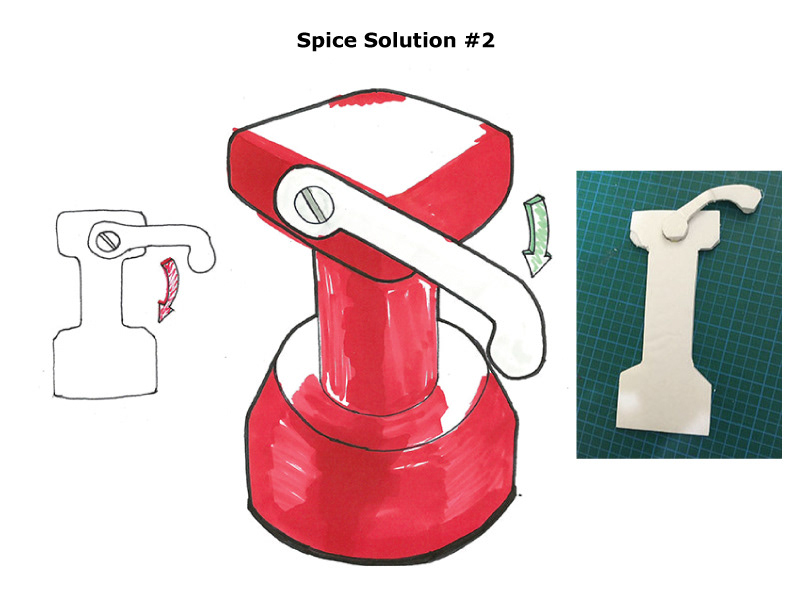
What if IKEA were a Canadian brand? This project is the result of an iterative design process that tasked students to determine the key characteristics of IKEA and Canada, synthesize them into a meaninful set of design criteria, and produce a working prototype of a kitchen-related cultural artifact.

At this stage in the project I am identifying some key characteristics of IKEA's brand in order to formulate meaningful design criteria later on in the project.

Similar to the previous image, I am identifying some key characteristics of Canada in order to formulate meaninful design criteria later on in the project.

An exploration of Canada's colour palette sourced from natural scenery, the colours of fall, and indigenous art.

This solution plays on Canada's multiculturalism and diversity. Canada possesses a large variety of spices, smells, colours, tastes, and languages. The clear, acrylic core displays the spice's name in a variety of languages and allows the user to view the richness in colour. In addition, signifiers on the lid allow for easy recognition from above (something that always bothered me about store-bought spice containers).

In this solution, I am attempting to adress potential accessibility issues present in other spice container solutions.

This solution attempts to address the accesibility issues found in kitchen cutting operations like chopping. The handle of the knife allows the user to hold the knife with greater strength. The tip of the blade is clamped into a holder that allows the user to move the knife up, down, side-to-side, and at an angle, allowing the user a much easier cutting experience. The chopping board itself is clamped to the countertop for added stability and contains miniature spikes on its surface to hold onto the food being worked with.

This solution attemps to address the accessibility issues surrounding the carrying and pouring of 2L milk cartons by people with limited ranges of mobility and strength.

Having discussed the previous solutions with the instructor, I attempted to address accessibility issues that one might face while using kitchen items that are Canadian in nature. The milk bag, while used in many other countries around the world, is something that the majority of Canadians identify with and use every day. This solution addresses the difficulties people with limited ranges of mobility may have with carrying and pouring out of a standard milk jug holder. The handle has been modified for two-handed use. The height of the jug has been increased to allow for a more stable hold of the milk bag in the container.

Another attempt at providing people with a limited range of mobility a solution to help with pouring from a milk jug container.

This spice container solution is inspired by the pond in my area, across the street from where J.E.H Macdonald used to live.

The form for this spice container was inspired by the hockey puck, a symbol of Canadian culture and sports. The cylindrical form of the container and its dimensions allow for the user to hold and operate the container with one hand.




This picture shows the working protoype in operation. The solution plays on Canadian diversity and multiculturalism. The user can see and smell the many spices that are representative of Canada's diverse cultural mosaic. The plywood sides make reference to Canadian materials and the form is inspired by the hockey puck. The easy assembly, cleaning, and intuitive operation fulfill the design criteria of IKEA products, as developed above. The product could be sold individually or in sets and could potentially have interchangeable acrylic rings to accomodate different, larger spices.



